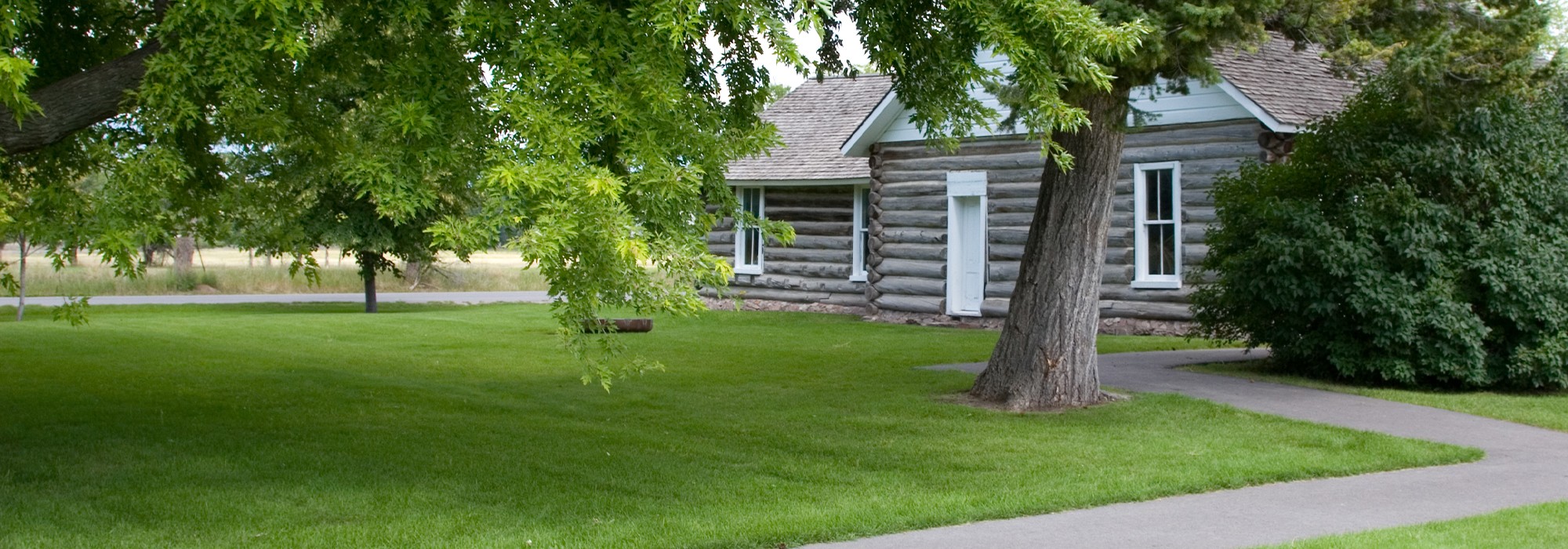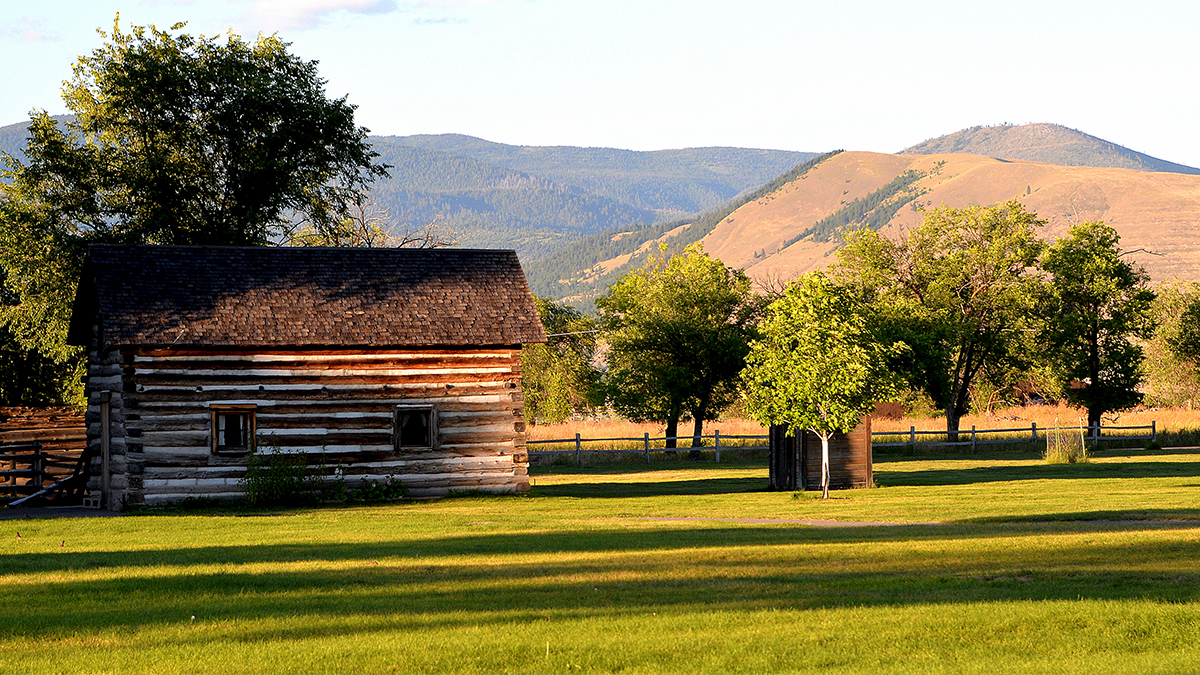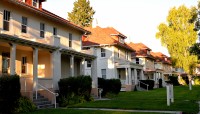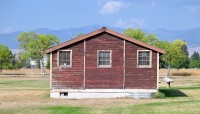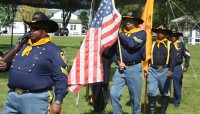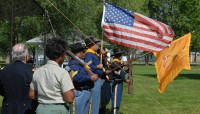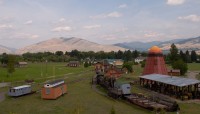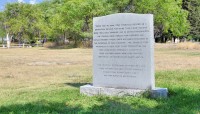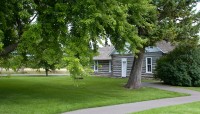Landscape Information
Located in the Two Rivers neighborhood north of the Bitterroot River, this 376-acre, relatively flat parcel incorporates a fort established in 1877. Built without palisade walls or defensive earthworks, the fort was organized around a rectangular parade ground. Just north of the complex, the .88-acre Post Cemetery, was established in 1878. It is here that members of the 25th Infantry, an African American “Buffalo Soldier” regiment, who was stationed at the fort, are buried.
Between 1908 and 1912 the fort was redesigned including a new parade ground and a boulevard system; ornamental trees planted; and lampposts, sidewalks, wrought iron fencing, and raised flower beds installed. Structures constructed around the parade ground, including Mission-style officers’ quarters were arranged in a curvilinear row. The fort acted as a military institution and as a park.
Fort Missoula served as the regional headquarters of the Civilian Conservation Corps from 1932 to 1942. The agency constructed structures and drives at the fort’s western edge; and established an allée of still extant Siberian elms along the original entrance drive (now Fort Missoula Road). During World War II the site became an internment camp, with approximately 1200 Italian nationals and 1000 Japanese-Americans confined. After the war, the U.S. Army sold or leased portions of the fort to private organizations, and federal, state and county agencies.
Established in 1975, the Historical Museum at Fort Missoula incorporates 32 acres of the fort’s southern section, framed by a looped drive. The nonprofit, The Northern Rockies Heritage Center, manages seventeen acres east of the museum, including the early twentieth century parade ground and the officers’ quarters. The northern portion of the fort features the 156-acre Fort Missoula Park, designed by The Land Group, and completed in 2018. The fort was listed in the National Register of Historic Places in 1985, with a boundary increase in 2012.



